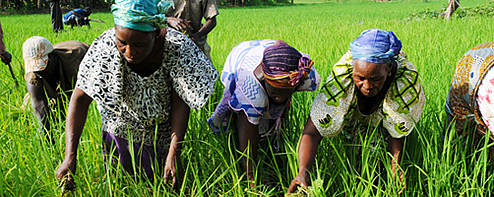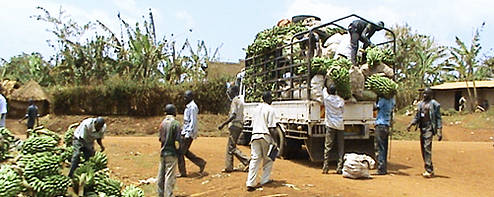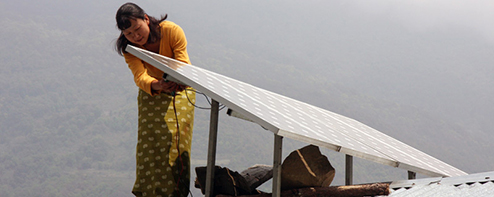
There has never been a more critical time to focus on international development. Multilateral development banks (MDBs), in particular, exemplify the critical role that development initiatives play in promoting economic growth and reducing global poverty.
Yesterday, the Treasury Department recognized exceptional development projects undertaken by the MDBs at the annual Development Impact Honors ceremony. For the second year in a row, this event brought together policymakers and leaders in development and business to honor initiatives that address key global challenges – like poverty, hunger, disease and climate change – while also supporting our national and economic security interests.
“The projects we are honoring today are new high impact approaches to international development, and they reinforce our values – whether it is developing clean energy sources, advancing women’s economic equality, promoting food security or helping the most vulnerable populations,” said Secretary Lew. “These kinds of successful investments help to create the next generation of emerging markets and strengthen our national security.”
Projects were judged in a number of areas including their effectiveness, the focus and quality of their work, and their success in overcoming development challenges. Many of these projects specifically focus on empowering vulnerable groups such as women and youth through programs that provide economic opportunities and health support.
1. Cote D’Ivoire Project: Gender-Based Violence Recovery
African Development Bank

One of this project’s most important contributions has been its role in bringing the problem of gender-based violence out of the shadows and more effectively coordinating care for victims. Beginning in 2001, the political crisis in Cote d’Ivoire created conditions where living standards deteriorated, poverty increased, and violence against women—often used as a psychological weapon of war—affected over 65 percent of all women by 2008. This project tackled gender-based violence using a holistic approach with three key elements: integrated service centers to provide medical, psychological, economic, legal, and judiciary services to survivors; income-generating projects for women’s associations; and training components for NGO partners, police, community leaders, local actors, social workers healthcare workers, and legal assistants. Through this approach, the project has modified social perceptions, changed behaviors and involved men in the fight against gender-based violence. Directly assisting 3,500 women and girls, the program reached 1.5 million people to advocate against perpetrators of gender-based violence and supported 250 women’s associations that are now generating economic opportunities for women.
2. Uganda Community Agricultural Infrastructure Program
African Development Bank and International Fund for Agricultural Development

By involving communities in the planning, building, and maintenance for new agricultural infrastructure, this project has taken an innovative approach by using local contractors, building capacity in communities, creating jobs for rural youth and women, and collecting fees to fund community maintenance crews. This project helped build nearly 4,000 kilometers of rural roads, 74 rural markets, and scores of agro-processing units such as coffee hullers, maize mills, and milk coolers. Incomes for farmers have risen for many crops, transportation costs and travel times have been cut in half, and post-harvest losses have dropped by 20 percent.
3. Bhutan Green Power Project
Asian Development Bank

This project exemplifies a well-designed initiative that simultaneously meets the goals of economic growth, rural development, and environmental protection. With a wealth of hydropower capacity, Bhutan partnered with the private sector to create a run-of-the-river hydropower facility—that builds no dam or reservoir—to replace fossil fuel-generated power with clean sources of energy. Using income generated from energy sales to neighboring India, the project extended hydroelectricity grids to over 8,700 rural households and facilities and put in place solar power systems to electrify schools, health clinics, and community centers in remote, mountainous terrain.
4. Mexico Training and Employment Program, Phase II
Inter-American Development Bank

Recognizing that the matching process between training programs and employers’ needs was lacking, this project enlisted private employers into a program to provide on-the-job training. From 2010 through 2012, this program provided hundreds of thousands of people with stipends for on-the-job training, helped obtain employment for 1.5 million people, and created a website where 7 million could search for information on employment or training. By carefully monitoring outcomes and implementing robust evaluation practices, the program could be continuously modified to improve its effectiveness and meet the needs of employers. Approximately 70 percent of the beneficiaries of these critical placement tools were women, and this project provided targeted training for vulnerable groups such as youth, harder-to-place adults, older workers, and disabled workers.
5. Post-Earthquake Assessment Project – Haiti
World Bank Group

Through its work addressing the 2010 earthquake in Haiti, this project represents the critical role that MDBs can play in responding to natural disasters. This earthquake led to an unprecedented disaster, resulting in the death of over 230,000 people, the destruction of over 100,000 homes and businesses, and losses estimated at 107% of Haiti’s GDP. Re-establishing basic services required a rapid approach to: (1) assess every building in the affected area in order to protect further death and injuries from dangerous buildings, and encourage the re-occupation of homes and businesses in safe ones, (2) collect the baseline damage data necessary to develop the blue-print for reconstruction and recovery, (3) strengthen the capacity of national institutions to lead the recovery efforts, and (4) promote safe rebuilding practices. The project relied on about 300 national civil servants, providing them with the required training and supervision to conduct expert-level assessments while retaining them under the authority of the Haitian Ministry of Public Works to promote the long-term strengthening of national institutions. These individuals rapidly evaluated over 400,000 buildings at a cost of roughly $10 per building, paving the way for reoccupation and the rehabilitation of the devastated region.